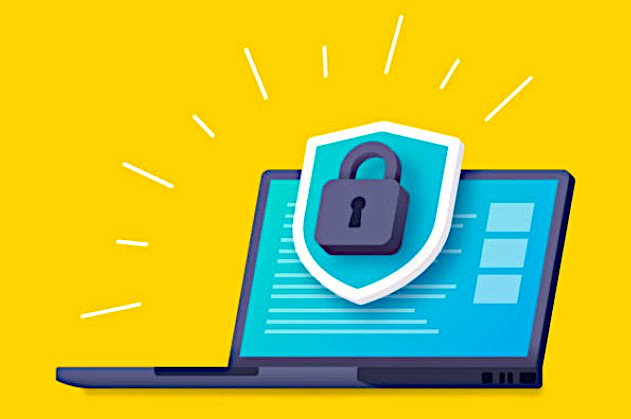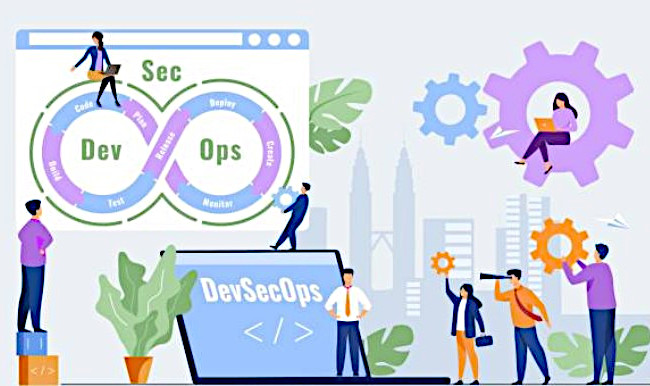DevSecOps is a software development methodology. It consists of adding security to the DevOps development cycle, already integrating teams of developers and operational teams of IT engineers. Find out everything you need to know about this approach: definition, benefits, best practices, training…
In the past, before the advent of DevOps, companies typically checked the security of their software at the end of the development cycle. Security was perceived as secondary, less important than other stages.
If a security threat was discovered in the almost finished software, it required modifying countless lines of code. This was both laborious and time-consuming. Over time, patching became the preferred method.
This approach to cybersecurity mainly relied on the hope that no problems would arise. It was not yet customary to invest the time and money needed to concretely strengthen software security.
However, over the past decade, the IT infrastructure has evolved significantly without cybersecurity tools keeping pace. DevOps methodology has become predominant in the world of development, but most code testing tools are not fast enough to keep up with this pace.
DevOps can bring many benefits to a company: it improves collaboration between teams, accelerates time to market, increases productivity, and enhances customer satisfaction.
However, all these benefits can be reduced to ashes in case of an incident. That’s why DevSecOps was born, to prioritize cybersecurity in the adoption of DevOps.
What is DevSecOps?
In the eyes of many companies, there is a perceived trade-off between speed and security in code delivery. DevSecOps aims to change this prejudice through an approach where everyone is responsible for security.
The term DevSecOps is a blend of the words “development,” “security,” and “operations.” It involves injecting security practices into the organization’s DevOps pipeline by incorporating security at every stage of the software development cycle rather than waiting until the end.

This approach aims to automate the integration of security at every phase of the software development lifecycle, from initial design to delivery, including testing and deployment.
It represents a natural and necessary evolution of security in the software development field. In the past, security was added at the end of the development cycle by an independent team.
However, this approach was viable in a time when software received only one or two updates per year. With the rise of Agile and DevOps methods aiming to reduce development cycles to just a few weeks, a paradigm shift was necessary for cybersecurity.
With DevSecOps, the security of both the infrastructure and the application is directly integrated into Agile and DevOps processes and tools. Security issues are addressed as soon as they arise, making it simpler and less expensive.
Furthermore, DevSecOps transforms security into a shared responsibility among development, security, and IT teams. It is no longer solely the responsibility of the security team.
What are the benefits of DevSecOps?
Clearly, the two primary benefits of DevSecOps are speed and security. Development teams deliver higher-quality, more secure code more quickly and, as a result, at a lower cost.
First and foremost, this approach avoids significant time losses during development in the event of a security issue.
Fixing the code and resolving security problems can be very costly and time-consuming. DevSecOps eliminates the need to repeat this process.
Cybersecurity procedures are implemented from the beginning, and the code is reviewed, scanned, and tested throughout the development cycle to detect and address issues as soon as they are identified.
Security concerns are thus corrected before additional dependencies are introduced. Additionally, better collaboration between development, security, and operations teams improves the organization’s responsiveness to incidents.
In general, DevSecOps reduces the time required to patch vulnerabilities. Scanning and patching are integrated into the release cycle, increasing the ability to identify and correct common CVEs (Common Vulnerabilities and Exposures).
This limits the window of time during which a hacker can exploit vulnerabilities. Furthermore, DevSecOps relieves security teams and also simplifies compliance.
Cybersecurity testing can also be integrated into an automated testing suite by operational teams if an organization uses a CI/CD (Continuous Integration and Continuous Delivery) pipeline to deliver its software.

Automating security checks ensures the patching of software dependencies and allows for testing and securing the code with both static and dynamic analyses before the final update is deployed into production.
Lastly, DevSecOps is an adaptable and repeatable process. This allows for the consistent application of security within the environment, despite changes and the emergence of new requirements.
DevSecOps best practices
The implementation of DevSecOps is based on the adoption of practices and methods. Here are the main ones.
Shift Left
The first principle of DevSecOps is “Shift Left.” Software engineers are encouraged to shift security from the right, representing the end of development, to the left, symbolizing the beginning of the DevOps process.
Security is integrated into the development process from the very start, and architects and cybersecurity engineers are part of the development team.
Their role is to ensure that every component and configuration element of the stack is patched, securely configured, and documented.
This shift left allows the DevSecOps team to identify security risks early and ensure that threats are addressed immediately.
The development team must, therefore, think about building the product efficiently while also implementing security along the way.
Secure coding
The code of the software must be secure to be highly resistant to vulnerabilities. Otherwise, many security risks can arise, such as a leak of confidential information.
Developers should, therefore, master security techniques, even if it requires investing time and money in their training. It is also relevant to establish coding standards to assist developers in writing clean code.

Automation
Automation is a crucial aspect of DevOps, as well as DevSecOps. It’s essential to automate security to keep up with the pace of code delivery within a CI/CD environment.
This is especially important for large organizations where developers push various code versions into production multiple times a day.
However, this automation of security needs careful consideration. Choosing the right tools is imperative.
In general, Static Application Security Testing (SAST) tools are preferred to continuously check and identify potential issues very early in the development cycle.
Training and education
Another essential practice in DevSecOps is training. Every member of the organization must understand the company’s security posture, adhere to the same standards, and have a basic knowledge of cybersecurity principles.
This involves a collaboration between teams to educate employees across all departments.
Leaders must also promote a culture of change and communicate security responsibilities. DevSecOps teams should create a functional system using the appropriate technologies and protocols.
Traceability, auditability and visibility
Traceability, auditability, and visibility must be implemented in the DevSecOps process. This helps gather more information and enhances the security of the environment.
Traceability allows for tracking configuration items throughout the development cycle. It is a crucial point in the control framework, enabling compliance, bug reduction, code security, and maintainability.
Auditability is essential to enable security and compliance checks. These technical, procedural, and administrative security checks must be documented and auditable by members of all teams.
Finally, visibility is indispensable in a DevSecOps environment. The organization should have a robust monitoring system to measure operational status, send alerts, provide better change tracking, and detect cyberattacks in real-time.

People, processes and technologies: the DevSecOps trinity
DevSecOps is based on a trinity composed of people, processes, and technologies. These three elements play a significant role in the success of this methodology.
It is imperative that all employees are involved to enable a mature and effective DevSecOps environment. Convincing senior managers of the relevance of this approach can be challenging, but the surge in data breaches due to a lack of security is a compelling argument.
Processes encompass many components, with standardization and documentation of the workflow being the most crucial. DevSecOps aims to establish a common framework for the processes of different teams to enhance security during development.
Lastly, technology is necessary for executing the processes. Among the key technologies of DevSecOps are automation, configuration management, and Security as Code.
The challenges of DevSecOps
The implementation of DevSecOps comes with several challenges to overcome. First and foremost, the project may face significant resistance. In general, major changes are often met with reluctance from the majority.
Furthermore, DevSecOps relies on collaboration between developers and security professionals. Tensions can arise between these two teams, each blaming the other for the difficulties they encounter.
Another common belief is that increased security hinders innovation and code delivery. Therefore, a cultural shift is necessary for the implementation of DevSecOps.
The global shortage of cybersecurity engineers is another challenge.
There are not enough professionals to meet the demand, and this is particularly problematic for small and medium-sized enterprises (SMEs).
Collaboration between security and operational teams can also create difficulties. In the event of an anomaly, engineers often first suspect an infrastructure or software configuration issue. However, DevSecOps requires an immediate suspicion of a cyberattack.

What is a DevSecOps Engineer?
More and more companies recognize the importance of DevSecOps and seek to adopt it to enhance the security of their software. However, this approach requires technical expertise.
The DevSecOps Engineer, or DevSecOps professional, is in high demand. They are proficient in the principles and practices of DevSecOps, as well as programming languages like Python, Java, and Ruby.
Furthermore, a DevSecOps engineer uses software tools such as Chef, Puppet, Checkmarx, and ThreatModeler.
They are also experts in threat modeling techniques and risk assessment. Finally, they keep abreast of cybersecurity threat news, emerging best practices, and security software updates.
How do you implement DevSecOps?
The implementation of DevSecOps can be broken down into eight steps. First, strategic and concise planning is essential. Test criteria and threat models need to be established.
The next step is development, and teams should begin by assessing the maturity of their existing practices. It’s possible to gather resources from multiple sources to build upon. At this stage, establishing a code assessment system can encourage the uniformity required by DevSecOps.
Building can be automated using tools, allowing the merging of source code and machine code. These tools offer many features such as a wide collection of plugins and multiple user interfaces. Some can even automatically detect vulnerable libraries and replace them with new ones.
Testing relies on a robust automated framework, enabling the integration of strong testing practices into the development pipeline.
Generally, the deployment stage is carried out using Infrastructure as Code tools. These tools automate the process and accelerate software delivery.
Another crucial step is operations, and teams should take care of periodic maintenance. They should monitor zero-day exploits and secure the infrastructure to eliminate the risk of human error.
The use of continuous monitoring tools is also an important part of the process. It ensures that security systems are functioning as intended.
Finally, scaling IT infrastructure is essential in the face of cybersecurity threats. Virtualization eliminates the need to expend resources on maintaining in-house data centers.

How do I take a DevSecOps training course?
DevSecOps experts are in high demand and can benefit from numerous job opportunities and high salaries. However, this requires significant technical skills.
A DevOps expert is proficient in configuration management, continuous integration and delivery, automation tools, and the cloud. Additionally, a DevSecOps engineer also handles cybersecurity techniques and tools.
To acquire all these qualifications, you can choose DataScientest. Our DevOps engineer training teaches you how to use all the tools such as Python, Git, Docker, Kubernetes, or Amazon Elastic Compute Cloud.
At the end of the program, you will be able to automate the creation of test servers through scripting, securely store data, manage software containers, and monitor the infrastructure. In short, you will have all the skills of a DevOps professional.
Our training program leads to a state-recognized diploma and is conducted entirely online. All our programs adopt a hybrid format that combines flexible learning on a coached platform with Masterclasses led by a Data Scientist.
For this DevOps engineer curriculum, you can choose from three different formats. The intensive BootCamp can be completed in 11 weeks, the Continuous Training in 9 months, and the apprenticeship in 16 weeks.
The training can be fully funded if you are unemployed. Don’t waste any more time and discover DataScientest’s DevOps engineer training!










